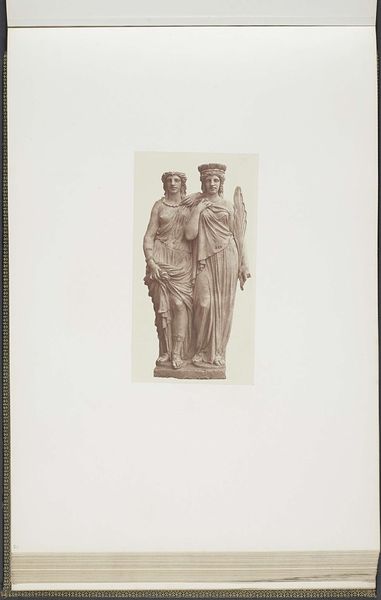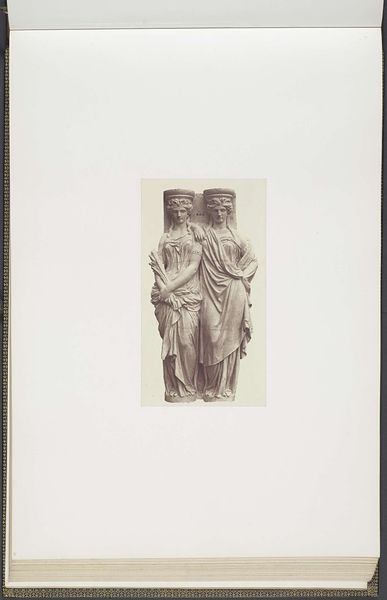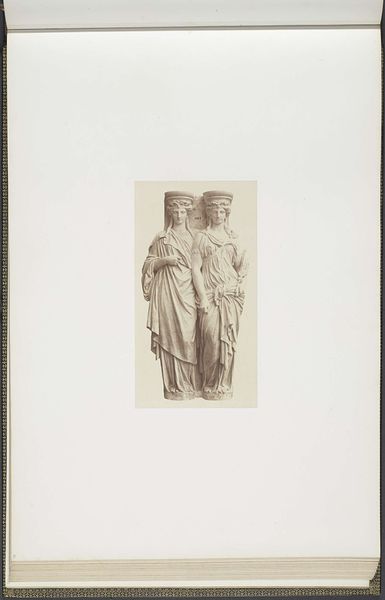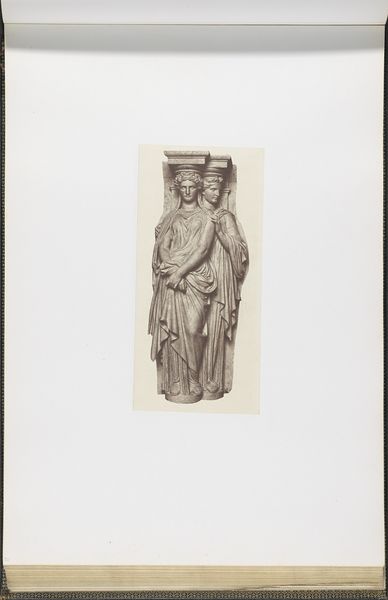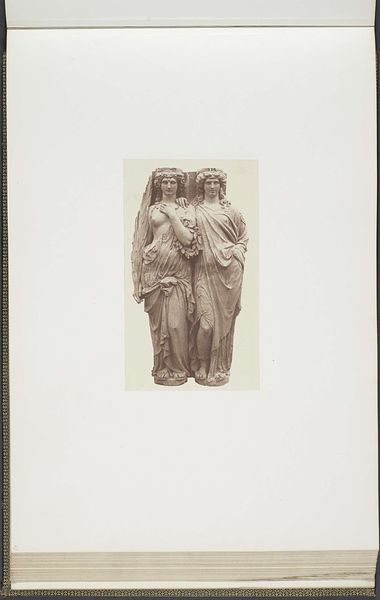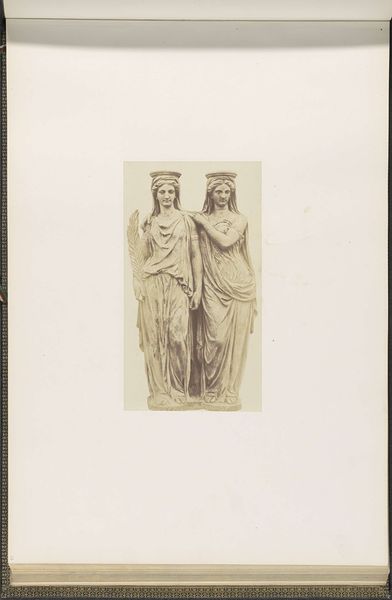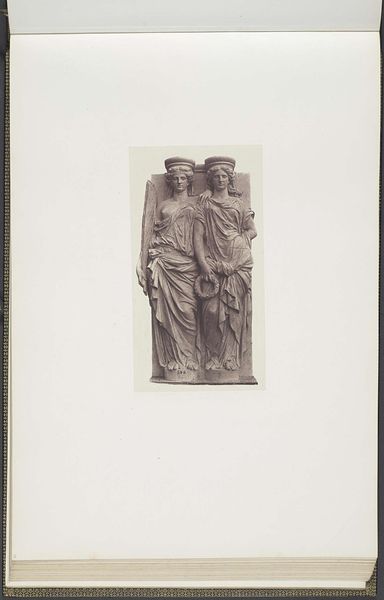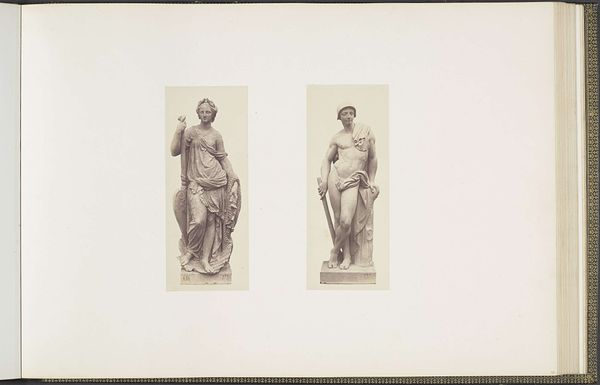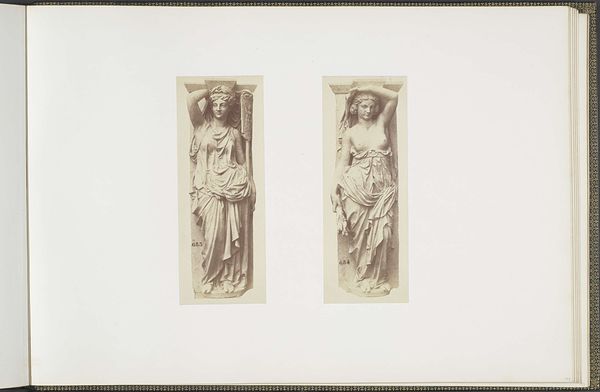
Gipsmodellen voor kariatiden op het Palais du Louvre door Elias Robert c. 1855 - 1857
0:00
0:00
print, photography, sculpture
#
portrait
#
neoclacissism
# print
#
classical-realism
#
photography
#
pencil drawing
#
sculpture
#
academic-art
Dimensions: height 382 mm, width 560 mm
Copyright: Rijks Museum: Open Domain
Editor: So, here we have Edouard Baldus’s photograph, "Gipsmodellen voor kariatiden op het Palais du Louvre door Elias Robert," taken around 1855 to 1857. It’s a shot of plaster models for caryatids. The statues themselves feel very neoclassical, almost severe. What’s your take on this work? Curator: Well, considering it through a materialist lens, I immediately think about the process. We're looking at a photograph of plaster models, intermediary objects destined for architectural application on the Louvre. Consider the labour involved at each stage, from quarrying stone for the original sculpture to mixing plaster for these models, and finally the photographic process itself, which requires its own technical expertise and chemical knowledge. Baldus chose photography to reproduce and disseminate images of these models – it democratises art by the medium that made it accessible. Editor: That's interesting! I hadn't really thought about photography as a means of democratizing art in that era. Do you think the choice of plaster as a material is significant, too? Curator: Absolutely. Plaster is cheaper, more readily available, and easier to manipulate than marble or other stone. These models allowed architects and sculptors to refine their designs and allowed for alterations or variations. Furthermore, photography made it easier to disseminate this work, enabling others to cheaply examine or reproduce the designs from a photo print, without viewing it in person. Think about the shift this causes! Before photography, you relied on the artist’s interpretation to render or sketch these sculptures or designs by hand. With photography we're capturing what can be considered "evidence" of cultural progress or an effort to beautify state architecture through available mediums. Editor: I see. So, it's not just about the aesthetics, but also about the means of production and dissemination? It’s quite fascinating to consider that. Curator: Precisely. We must remember to examine the ways in which labor, materials, and technology intersected to shape not just this particular image, but also the broader artistic landscape of the time. What did this moment enable and encourage within other industries, social classes, or artists and artistic traditions? Editor: It's given me a lot to consider. I definitely have a newfound appreciation for Baldus's work. Thanks for your insights!
Comments
No comments
Be the first to comment and join the conversation on the ultimate creative platform.
